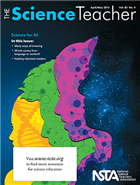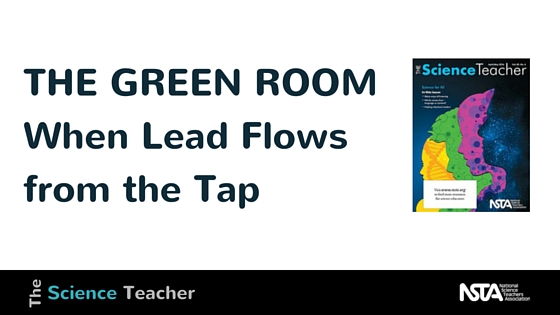THE GREEN ROOM: When Lead Flows from the Tap
By sstuckey
Posted on 2016-04-16
Making Your Teaching More Environmentally Friendly
Two years ago, the city of Flint, Michigan, began using water from the Flint River. The chemical composition of the Flint River water renders it more corrosive to pipes than the water from Lake Huron, Flint’s former water source. For two years, this corrosive water has been leaching lead from pipes and delivering that lead to faucets in thousands of Flint homes.
Lead is a neurotoxin, or toxic to the central nervous system. It can cause brain damage and affect intelligence, attention, and behavior. Experts say there is no safe level of lead exposure for children due to their rapid brain development. Read more about lead poisoning from the New York Times.
The effects of lead poisoning have been confirmed in Flint. Dr. Mona Hanna-Attisha documented the increased incidences of elevated blood lead levels in children exposed to the city’s contaminated water. Long-term public health initiatives are being established to assist thousands of Flint families who may be dealing with emerging developmental effects for years to come. CNN provided several articles and videos on the Flint water crisis.
Classroom activities
The crisis in Flint is not the first time lead poisoning has made headlines. Concerns about exposure to lead-based paints and leaded gasoline have been widespread since the late 1900s. As a result, numerous related activities and lesson plans are available. The Los Angeles County Department of Public Health developed “Lessons in Lead” for the high school classroom with a focus on methods to prevent lead poisoning in the home. The Centers for Disease Control and Prevention’s (CDC) lesson elucidates the environmental chemistry of lead, including analysis of water, soil, and paint samples from student homes.
As the Flint water crisis continues to unfold, use it to explain lead exposure pathways and toxicity to your students. Lessons can extend far beyond the science classroom.
Amanda Beckrich is the Upper School assistant director, International Baccalaureate (IB) diploma program coordinator, and an environmental science teacher at Christ Church Episcopal School in Greenville, South Carolina.
Editor’s Note
This article was originally published in the April/May 2016 issue of The Science Teacher journal from the National Science Teachers Association (NSTA).
Get Involved With NSTA!
 Join NSTA today and receive The Science Teacher, the peer-reviewed journal just for high school teachers; to write for the journal, see our Author Guidelines and Call for Papers; connect on the high school level science teaching list (members can sign up on the list server); or consider joining your peers at future NSTA conferences.
Join NSTA today and receive The Science Teacher, the peer-reviewed journal just for high school teachers; to write for the journal, see our Author Guidelines and Call for Papers; connect on the high school level science teaching list (members can sign up on the list server); or consider joining your peers at future NSTA conferences.
The mission of NSTA is to promote excellence and innovation in science teaching and learning for all.
Future NSTA Conferences
5th Annual STEM Forum & Expo, hosted by NSTA
- Denver, Colorado: July 27–29
2017 Area Conferences
- Baltimore, Maryland: October 5–7
- Milwaukee, Wisconsin: November 9–11
- New Orleans, Louisiana: November 30–December 2
National Conferences
- Los Angeles, California: March 30–April 2, 2017
- Atlanta, Georgia: March 15–18, 2018
- St. Louis, Missouri: April 11–14, 2019
- Boston, Massachusetts: March 26–29, 2020
- Chicago, Illinois: April 8–11, 2021
Follow NSTA
Disclaimer: The views expressed in this blog post are those of the author(s) and do not necessarily reflect the official position of the National Science Teaching Association (NSTA).




